History:
The Focke-Wulf Fw 200 Condor, also known as Kurier to the Allies, was a German all-metal four-engined monoplane originally developed by Focke-Wulf as a long-range airliner. A Japanese request for a long-range maritime patrol aircraft led to military versions that saw service with the Luftwaffe as long-range reconnaissance and anti-shipping/maritime patrol bomber aircraft. The Luftwaffe also made extensive use of the Fw 200 as a transport.
The Fw 200 resulted from a proposal by Kurt Tank of Focke-Wulf to Dr. Rudolf Stuessel of Deutsche Lufthansa to develop a landplane to carry passengers across the Atlantic Ocean to the USA. At that time this was unusual, as airlines used seaplanes on long over-water routes. To fly long distances economically, the Fw 200 was designed to cruise at an altitude of over 3,000 m (9,800 ft) - as high as possible without a pressure cabin. Existing airliners were designed to cruise at altitudes below 1,500 m (5,000 ft). The Fw 200 was briefly the world's most modern airliner, until other high-altitude airliners started operating: the Boeing 307 in 1940 and the Douglas DC-4 in 1942. The designation "Condor" was chosen because, like the condor bird, the Fw 200 had a very long wingspan, to facilitate high-altitude flight.
Deutsche Lufthansa issued a specification in June 1936 after discussions between Tank, Dr. Stüssel and Carl August von Gablenz. The plane was designed by Ludwig Mittelhuber with Wilhelm Bansemir as project director. The first prototype, the Fw 200 V1, made its first flight after just over one year of development on 27 July 1937 with Kurt Tank at the controls. It was an all-metal, four-engined monoplane powered by four American 875 hp Pratt & Whitney Hornet radial engines, and intended to carry 26 passengers in two cabins for up to 3,000 km (1,860 mi). Two further prototypes were powered by German 720 hp BMW 132G-1 radials.
The Japanese Navy requested a military version of the Fw 200 for search and patrol duties, so Tank designed the Fw 200 V10 with military equipment. This Fw 200 was held in Germany because war had broken out in Europe by that time. This aircraft became the basis for all later military models used by the Luftwaffe.
To adapt it for wartime service, hardpoints were added to the wings for bombs, the fuselage was strengthened and extended to create more space, and front, aft and dorsal gun positions were added, in addition to an extended-length version of the Bola ventral gondola typical of World War II German bomber aircraft; for the Fw 200's militarization this incorporated a bomb bay as well as heavily glazed forward and aft flexible defensive machine gun emplacements at either end. The extra weight introduced by its military fitments meant that a number of early Fw 200 aircraft broke up on landing, a problem that was never entirely solved. Later models were equipped with Lorenz FuG 200 Hohentwiel low UHF-band ASV radar in the nose. In 1943 a version entered service that could carry the Henschel Hs 293 glide bomb, mandating fitment of the associated Funkgerät FuG 203 Kehl radio guidance gear on a Condor to steer them. (Wikipedia,2018)
The version shown here is a C-8/U10 variant introduced in 1943 with deep outer nacelles for carrying two(2) Hs 293 radio-controlled glide bomb and the FuG 200 Hohentwiel low-UHF band ASV sea search radar. Has defensive armament but is not functional. Has decals
Controls(Fw 200 Condor):
Standard flight controls
AG1: Stabilize Aircraft(for controlling the Hs 293)
AG2 & 3: Launch Hs 293
AG7: Lock/unlock tail wheel
AG8: Turn on/off navigation lights.
VTOL: Flaps
Trim: Trim aircraft
Controls(Hs 293):
Standard flight controls
recommended launch altitude is at 10,000ft at a distance of 8mi from the target (own opinion)
Have fun flying the "Scourge of the Atlantic" and sinking ships.
Do not switch to Hs 293 camera if there is a great distance between plane and the Hs 293. This causes the inboard engines' propellers to blow up, no idea why
Swastikas are there for historical accuracy. This post does not support Nazism. I am sorry in advance if anyone will be offended by the swastikas.
Specifications
Spotlights
- Frocet 1.2 years ago
- Varrell007 3.4 years ago
General Characteristics
- Predecessor Maritime Patrol Aircraft Challenge [CLOSED]
- Created On Windows
- Wingspan 117.5ft (35.8m)
- Length 85.7ft (26.1m)
- Height 21.0ft (6.4m)
- Empty Weight 20,423lbs (9,263kg)
- Loaded Weight 62,553lbs (28,373kg)
Performance
- Horse Power/Weight Ratio 0.083
- Wing Loading 9.7lbs/ft2 (47.6kg/m2)
- Wing Area 6,419.0ft2 (596.3m2)
- Drag Points 25721
Parts
- Number of Parts 606
- Control Surfaces 26
- Performance Cost 2,390

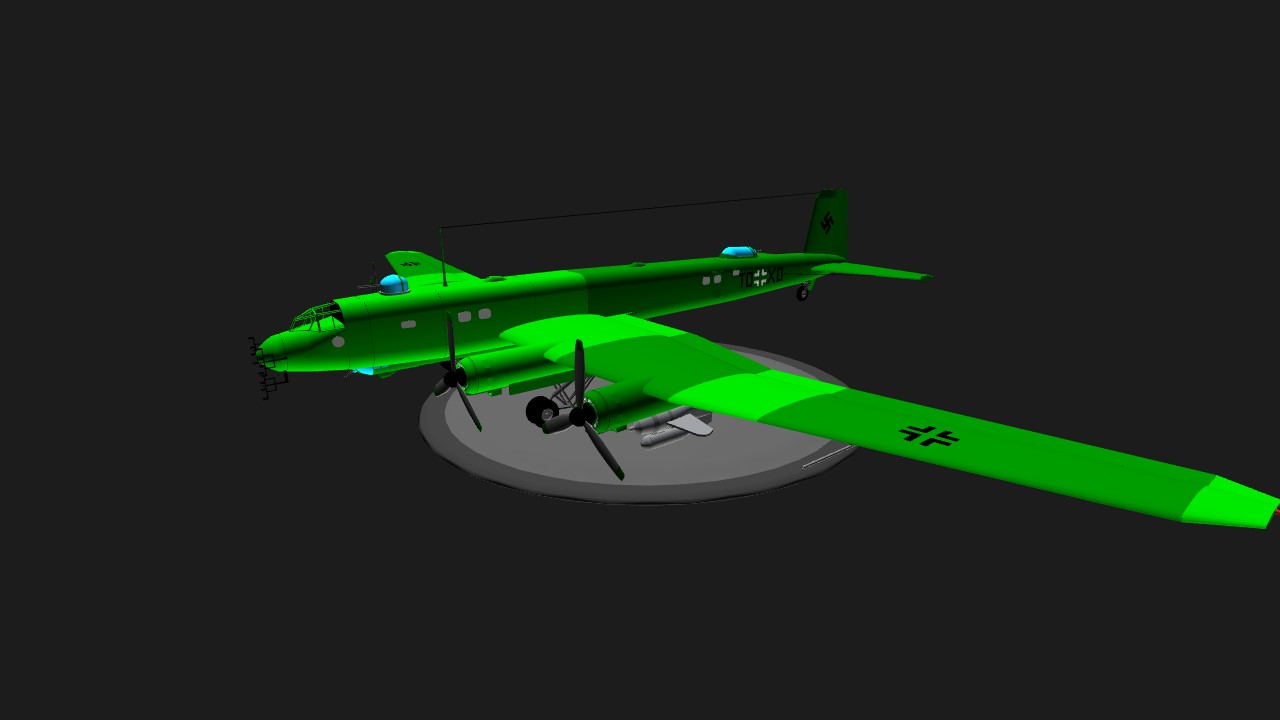
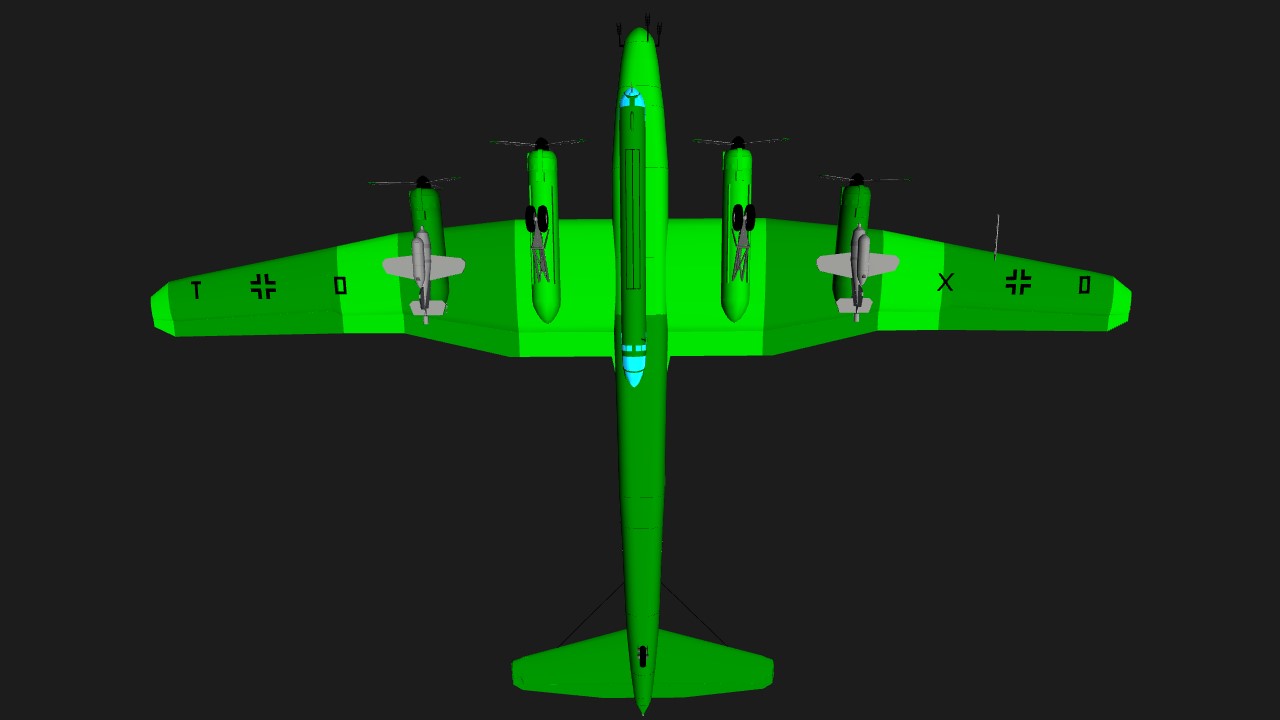
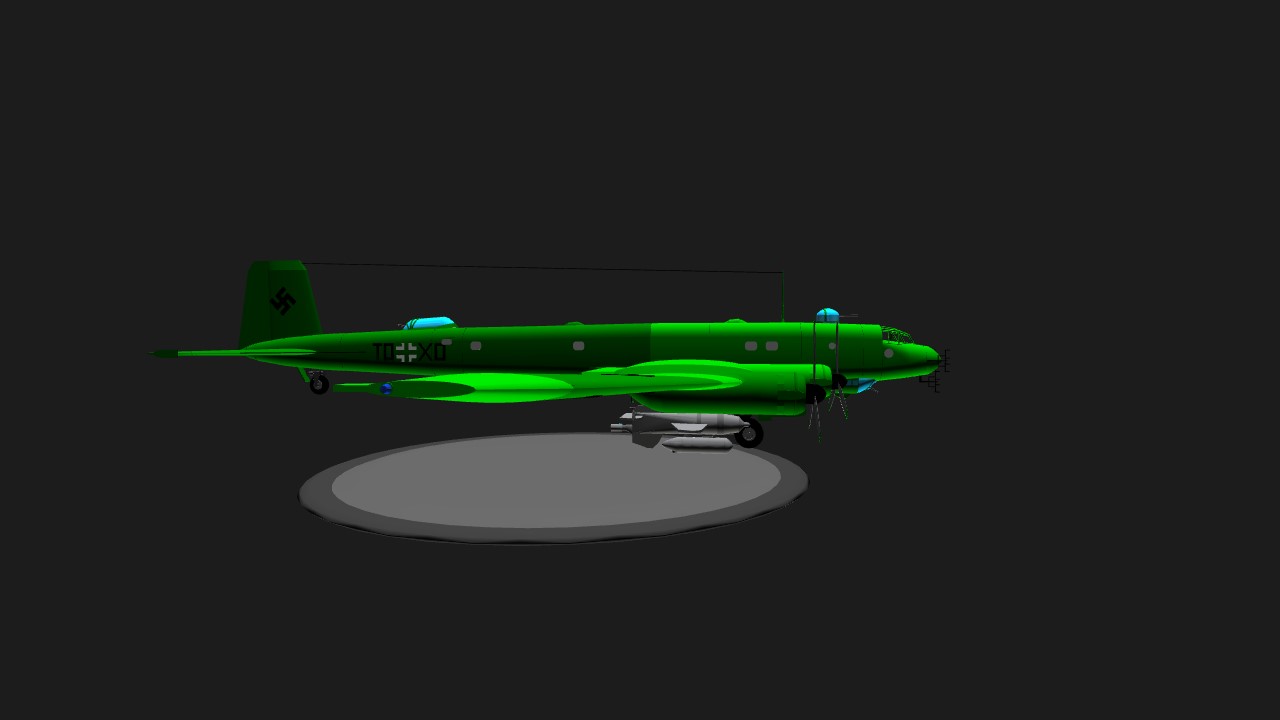
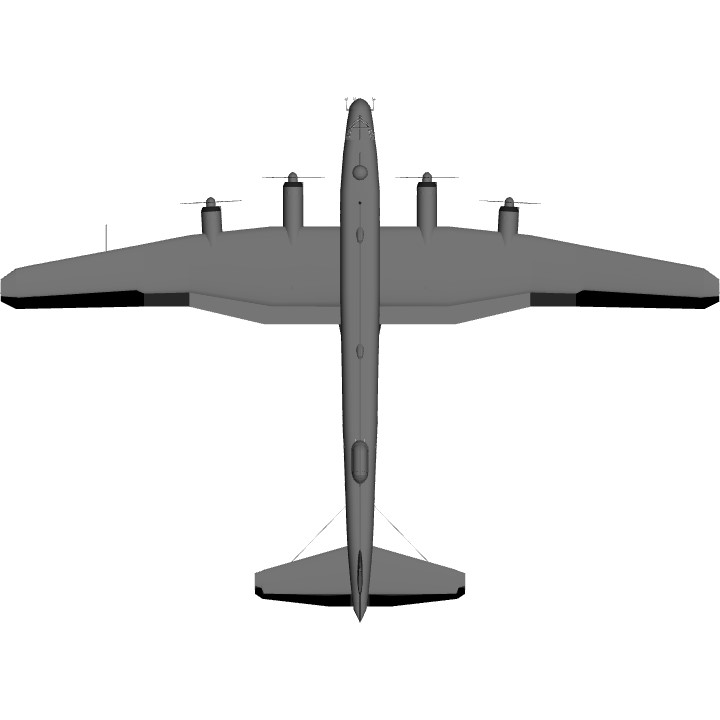
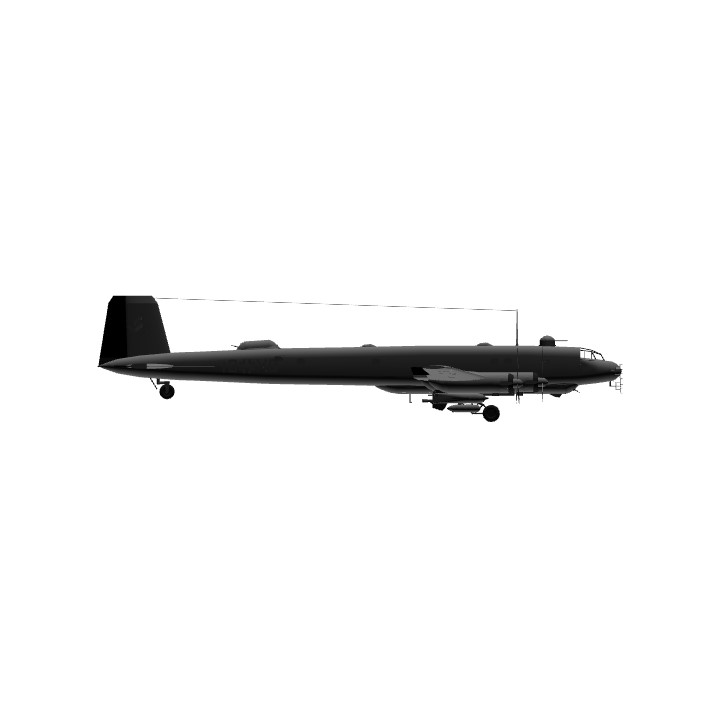
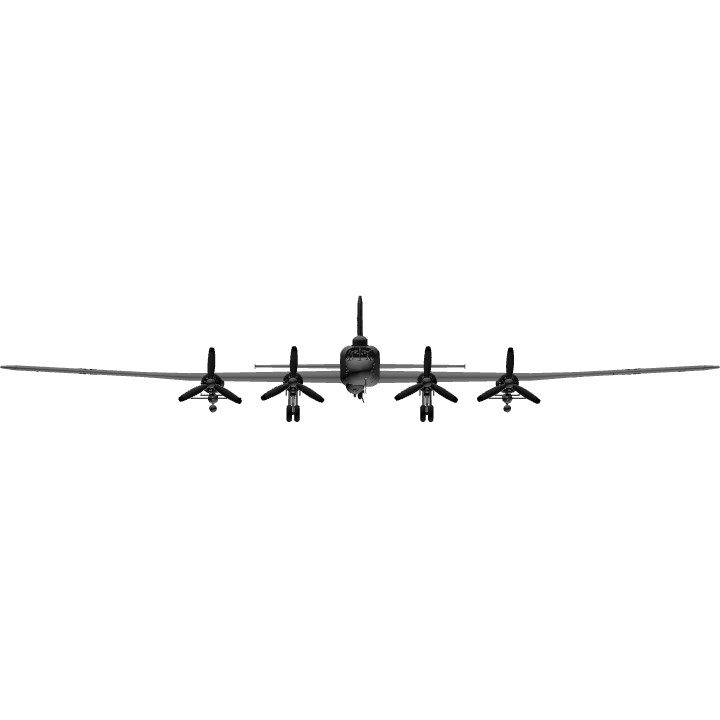
@PAFelite Results and Final Scoreboard page here.
clickity
@Dimkal
@Scottydoestuff Can u provide the required evidence for that? I'm open to examine that.
I'm pretty sure this guy copied another’s FW-200@Dimkal
@PAFelite Aircraft is within rules. Good luck!
I guess most bv238 models are scaled down
Lol why is it bigger than bv238 models XD